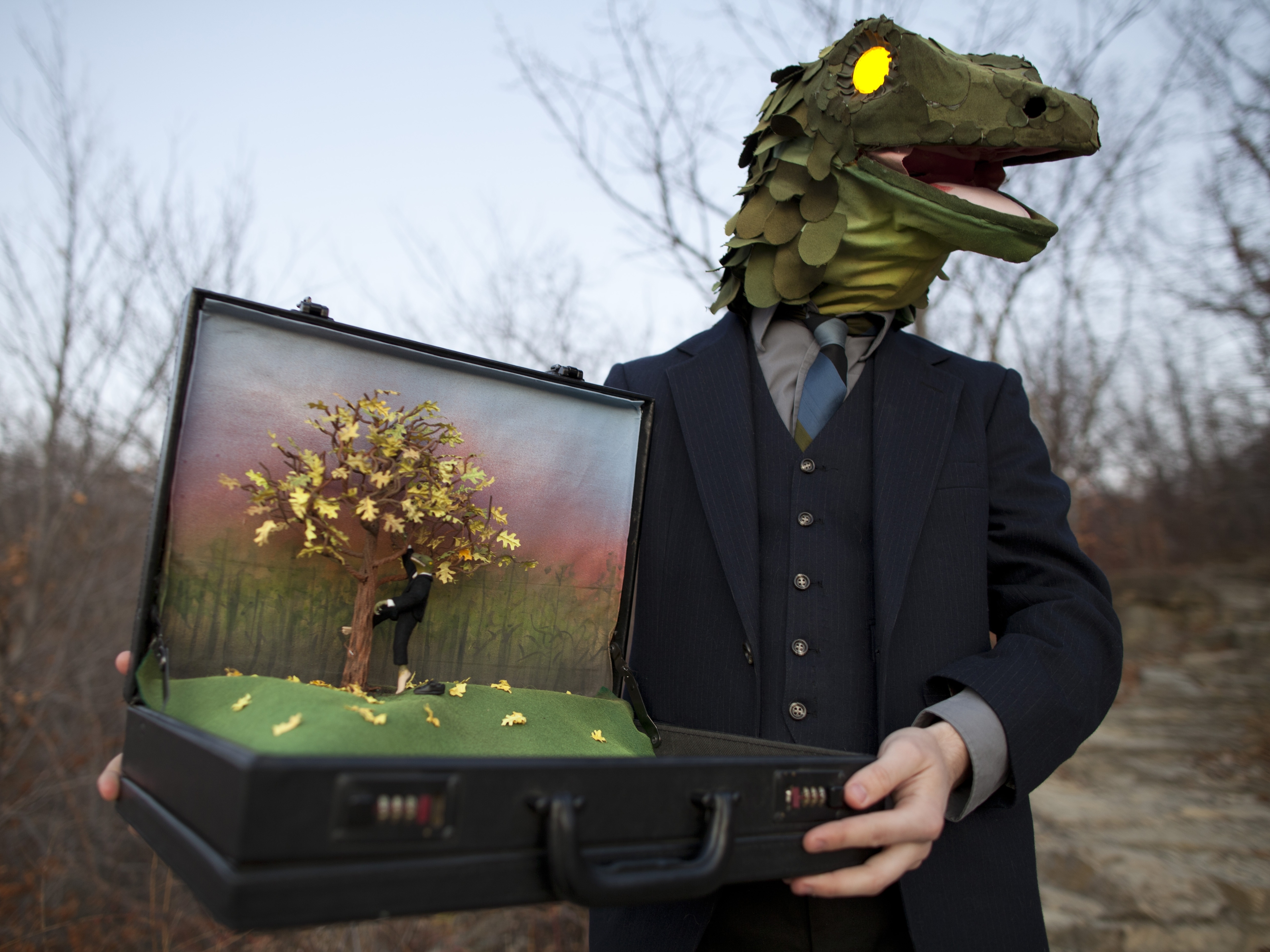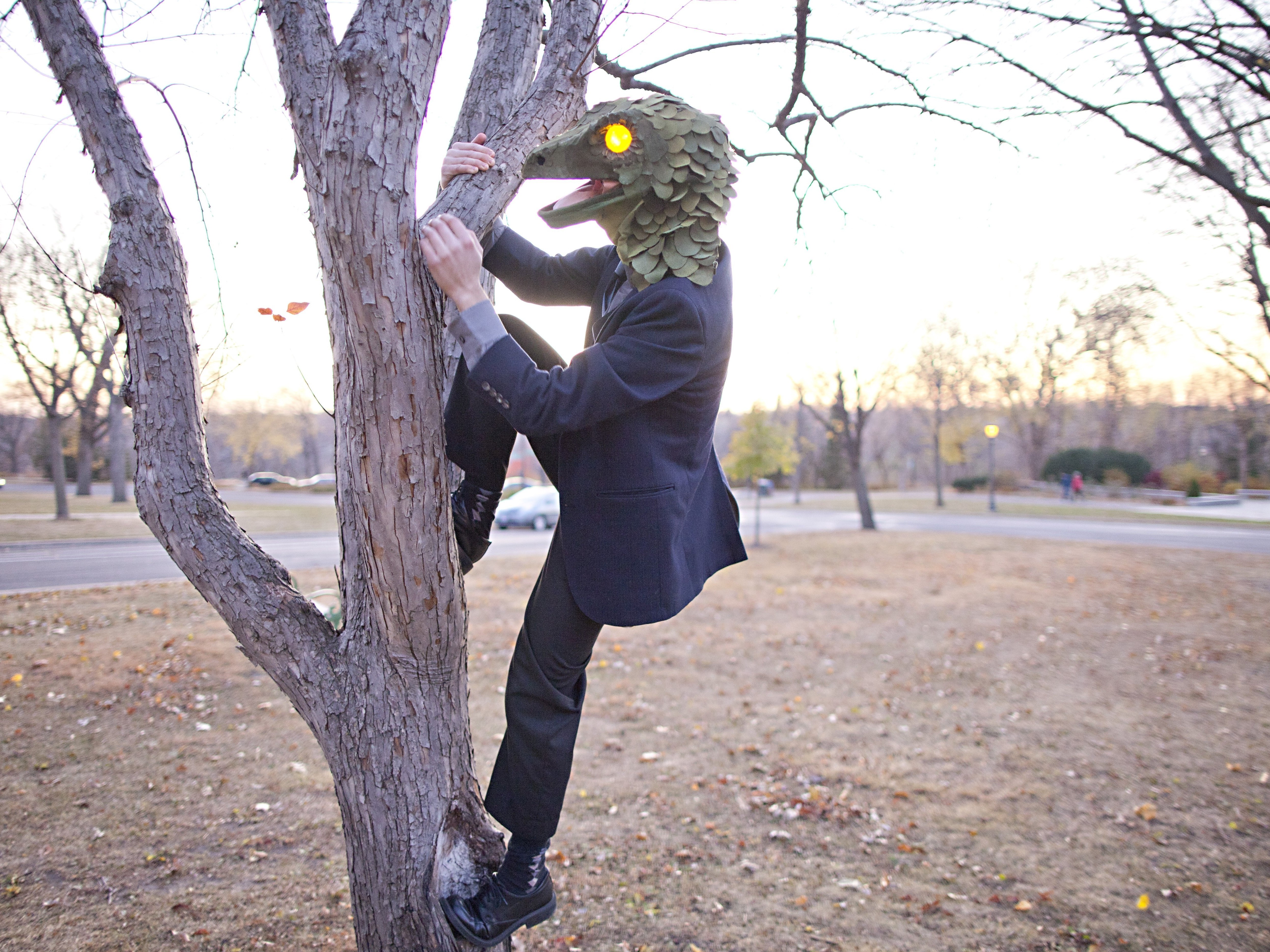This year for Halloween I decided to create a costume that depicts a dream that I had. The imagery was so vivid and lifelike, it seemed the perfect material to devise a fun costume and accessory project from.
The dream told a story of a professional-looking man being chased by something he could not see (scary, right!?). After he could run no more, he came to the edge of a forest and began to climb a tree to find safety. When he ascended, it was with fluidity and seemed natural. He climbed until he reached a point several feet up and became still, hanging effortlessly on the trunk of the tree. When he turned his head to face his pursuer, his head was that of a lizard, his hands and feet closely following suit in their transformation. As he stared, his big yellow eyes began to glow – he had eluded danger.
The visual composition of the dream interested me and I decided to make a mask to turn myself into the Business Lizard for Halloween. The mask, though, did not complete the story since people would ask, “Why a business lizard?” So I made the briefcase as an accessory in order to show people just what had happened in my dream and to help them understand the imagery of my costume.





























